Before we start
If we consider the entire course as an artistic journey through an oil painting, then before setting off officially, we need to make some preparations, just like we always plan ahead before every trip.
You might say, “But isn’t it more fun to travel without a plan, full of unknowns!” However, with a well-prepared plan, we won’t encounter unnecessary awkwardness due to cultural and geographical differences. By positioning ourselves correctly, we will enjoy better scenery, and surprises will follow.
I will guide you through this plan, so you don’t have to worry about it being difficult to understand:
History and genres of oil painting; Glossary of oil painting terminology. In this lecture, let’s start with the first part of the plan: the history and genres of oil painting.
Why learn about history and genres? I believe you should know that the fastest way to understand a new subject is to learn about its history. Oil painting has also evolved with the tides of history. Only by understanding the history of oil painting, common genres, characteristics and styles of each period, as well as their values and assertions, can we better understand each painting in the subsequent formal journey.
Alright, let’s begin.
Prehistoric Cave Paintings
Let’s start with a sentence:
“Everything has a beginning and an end, as long as human civilization exists, art will never die.”
Doesn’t this sentence sound a bit mystical? In fact, what it means is that art and human civilization are intertwined. If we want to know how oil painting originated, we need to understand how it emerged in human civilization.
This goes back to a very long time ago, when we were still cavemen, at the bottom of the food chain. We didn’t have sharp claws or strong limbs; all we had was fur to keep us warm and a glimmer of intelligence.
During that time, we faced danger even from cows and sheep because they hadn’t been domesticated and still had their wild instincts. A random charge from a horn could mean the end for us; a stampede could crush us.
But some animals could be hunted by humans. To communicate to others which animals were easier to hunt, we recorded them through painting.
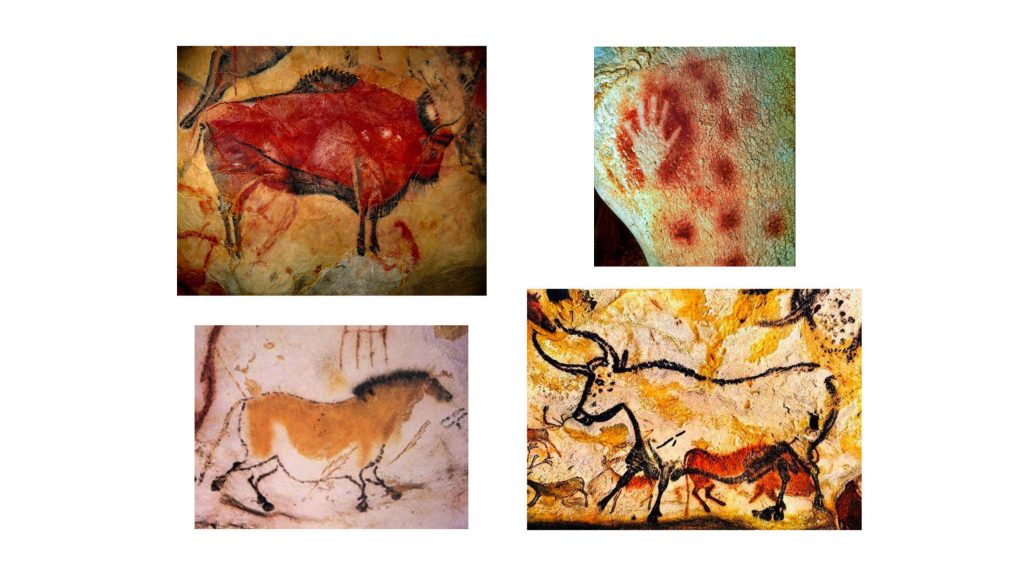
Later on, painting gradually evolved into a form of ritual, where we believed it held power and could bless us. By depicting hunting scenes, we could express our anxieties; through recording, we could console ourselves, dispel fears, and attract the favor of the gods. This was the original purpose of prehistoric cave painting.
However, it is clear that at this time, painting materials were all natural pigments. The manner in which everyone painted was still instinctual, instinctively drawing and smearing. So, we can refer to this stage as “painting like children.”
Ancient Greece and Ancient Rome
Moving on, we come to the periods of Ancient Greece and Ancient Rome. If prehistoric painting can be likened to drawing like children, the painting during these two periods is more akin to that of newly trained professional artists. However, there are relatively few surviving examples of painting from Ancient Greece, with sculpture being more prominent. One of the most famous contributions from this era is the proposal of the 1:7 golden ratio for the human body attributed to Polyclitus.
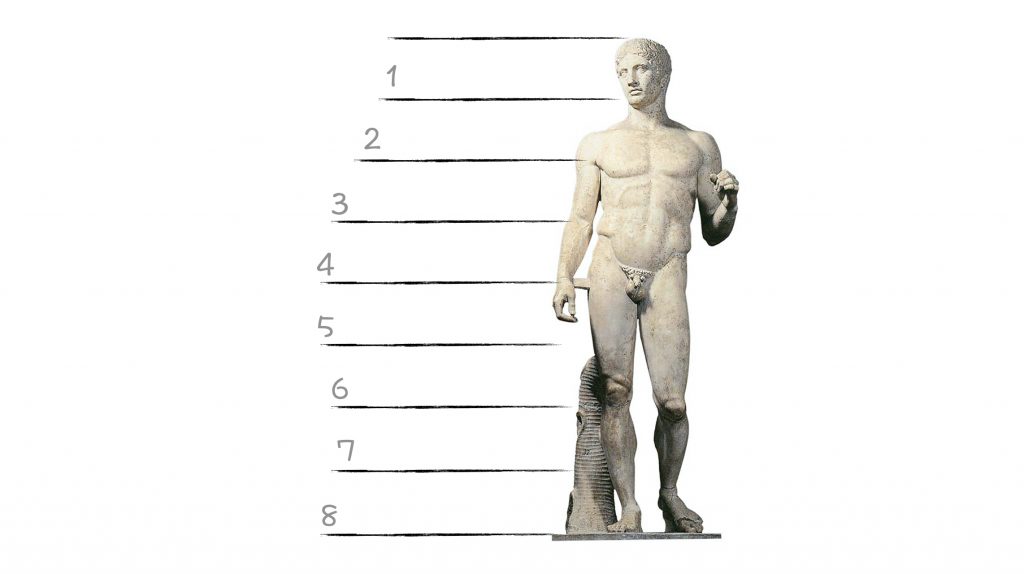
You might wonder why Ancient Greece began pursuing the golden ratio and the pursuit of perfection so early.
It’s because the ancient Greeks had great respect for nature in art. They believed that compared to anything artificial, nature was flawless. For example, they admired the patterns on snail shells, the curves of fish, and so on. Once, a painter wanted to depict a goddess and studied ten beautiful women, combining the natural and innate beauty from each of them to create the perfect image of the goddess.
So, you see, the ancient Greeks were quite formulaic. They discovered that the golden ratio was an excellent way to represent the perfect image of a person, both in form and proportion.
Moreover, their religious beliefs revolved around polytheism, and many of their artworks featured gods. Although these were based on human forms, they were idealized and proportionally harmonious.
This pursuit of perfection was also related to the high level of development in Ancient Greek civilization. This period was the pinnacle of their societal and cultural development, excelling in philosophy, literature, and art. It’s safe to say that Ancient Greece laid the groundwork for the entire trajectory of European civilization and development.
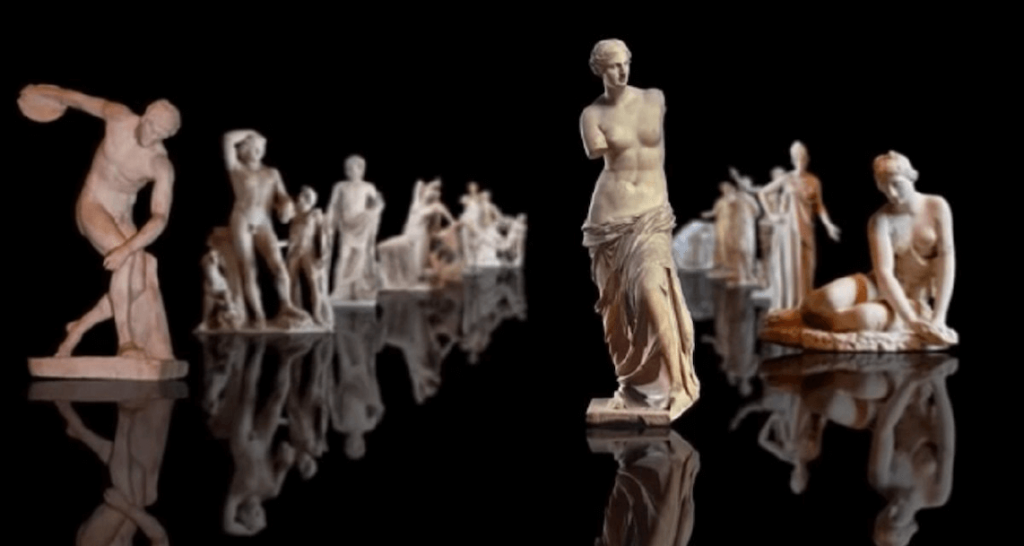
Moving on from Ancient Greece, let’s take a look at Ancient Rome. The artistic style of Ancient Rome differs from that of Ancient Greece. If Greek art is characterized by perfect idealism, then Ancient Rome epitomizes typical realism or naturalism. The portrayal of human figures, animals, and plants in Roman artworks is primarily based on reality. In other words, painters depicted things as they appeared in reality.
Now, why did Ancient Rome seem so pragmatic compared to Ancient Greece, which had many considerations?
We need to look at the historical context of that time. During the period, the Roman Empire was engaged in territorial expansion, facing constant battles and conflicts both internally and externally. The citizens were frequently discontented with political instability and external threats. To pacify the domestic population, the Empire constructed numerous open-air theaters and arenas.
The most famous ones were the Colosseum and the Circus Maximus. The Colosseum hosted daily shows, operating throughout the year. The state not only provided these entertainment events for free but also distributed free bread to the people.
In such an atmosphere, the people of Ancient Rome enjoyed living in the present moment. This temperament made them more pragmatic in their approach to art, emphasizing its practicality.
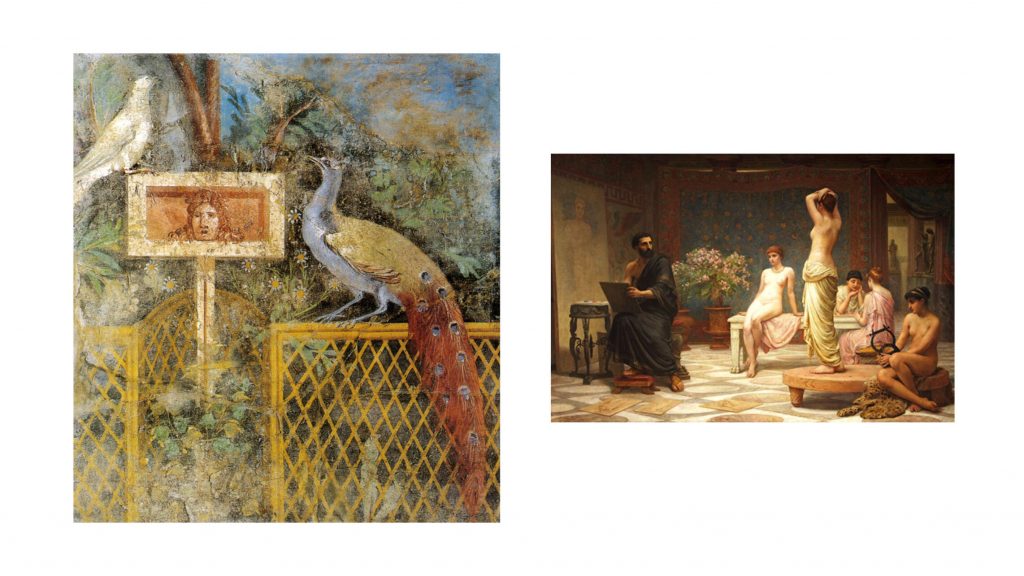
Middle Ages
In the blink of an eye, we arrive at the Middle Ages. The Middle Ages can be considered a period of “deliberate imitation of children’s drawings.” Why is that?
As mentioned earlier, Ancient Rome was frequently engaged in warfare, spectacles, and distributed free bread. Over time, this lifestyle led to a decline in civilization. When people become accustomed to getting things without effort, their intelligence noticeably diminishes.
At this time, a group of people emerged locally, known as pagans, who sought to change the situation through educating the people. They rapidly expanded in numbers, but as their population grew, they threatened the rulers’ position. Consequently, later emperors had to legitimize them, and they gradually developed into the state religion. These pagans were actually what we now know as Christianity.
They produced a large quantity of printed manuals, namely the Bible, aiming to convert everyone to their religion, to collectively worship God and to escape the hardships of the world. However, in those times of declining Roman civilization, the cultural level also declined, with few people literate, especially among the lower classes. If relying solely on preaching, it wouldn’t be compelling enough. So what to do?
They came up with the idea of using sequential pictures instead of words, accompanied by a narrator. This made it much simpler to spread religious teachings.
The lengthy Middle Ages were written with this clumsy yet straightforward expression, marking the era of dark religious rule. However, my favorite aspect of the Middle Ages is the art, particularly the paintings, which are very intriguing. If you’re interested, you should delve deeper into them.
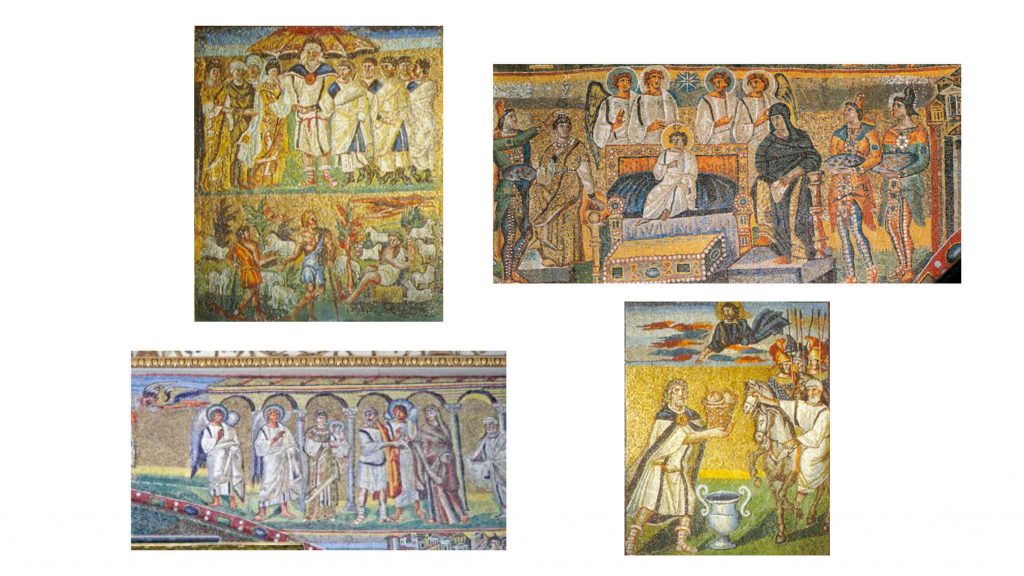
Originally, these paintings were all magnificent mosaic paintings, made by piecing together colored stones and colored glass. However, due to the high cost and lengthy process of mosaic paintings, they eventually switched to frescoes. Frescoes involve painting directly onto damp plaster walls with powdered pigments. Some people also used tempera (a mixture of egg and pigment) to paint directly onto wooden boards.
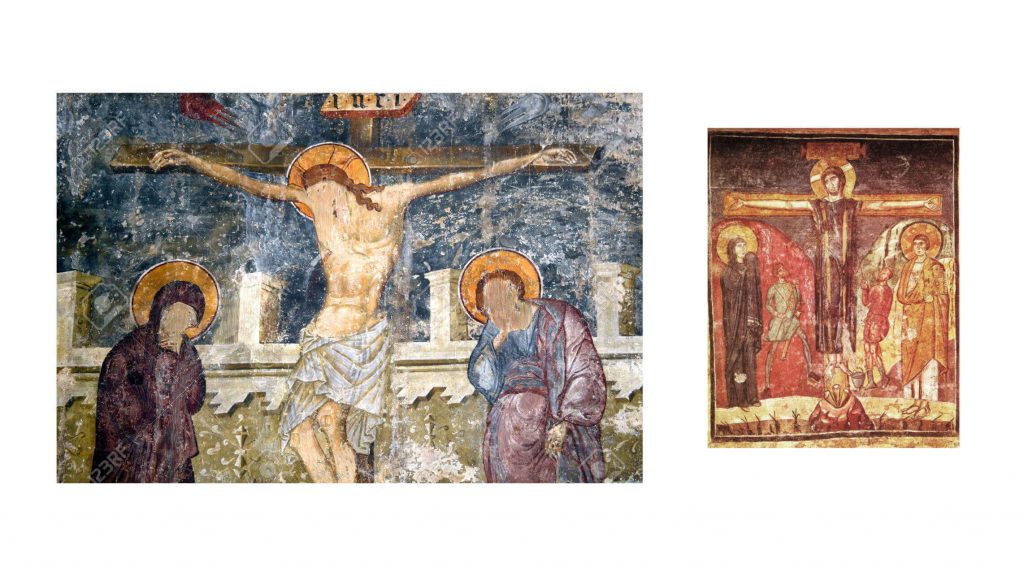
It must be acknowledged that the level of indoctrination present in these religious works of the Middle Ages far exceeds our imagination. To what extent were people indoctrinated? These works led to crusades, the Swiss Guards of the Pope, and armies of various local leaders, all fighting in the name of God.
The entire Middle Ages were spent amidst such influence of religious authority, with nearly 900 years of turmoil and conflict. You’ll find that many works from this period revolve around religion, the manifestation of miracles, and warfare in the name of God. The Church relied on these works to firmly control people’s thoughts and manipulate their beliefs.
Now, you should understand how oil painting originated. It is essentially a product of our spiritual pursuit, an inner need, and a means of expression and release.
Renainssance
During the medieval period, due to religious reasons, most artistic creations revolved around repetitive religious themes. Artists were regarded much like craftsmen, with low social status. Many artworks were created anonymously, and the names of the artists remain unknown to us. However, they quietly pursued exploration. As time progressed, technology advanced, and humanistic ideas emerged, signs of artistic and humanistic revival began to emerge.
During this period, a decisive figure emerged, named Giotto (circa 1267-1337). Before becoming a painter, he was a shepherd, which meant he lacked formal training. However, this also contributed to his unique painting style. He was the first to systematically develop the technique of three-dimensional painting, contributing to the advancement of his era.
Giotto was also a typical businessman. He openly stated his prices: for a certain amount of money, he would paint a person alongside the gods, sparking a trend of vying for positions. In many depictions of gods, the faces of local dignitaries began to appear. Gods became more humanized, displaying emotions and experiencing suffering.
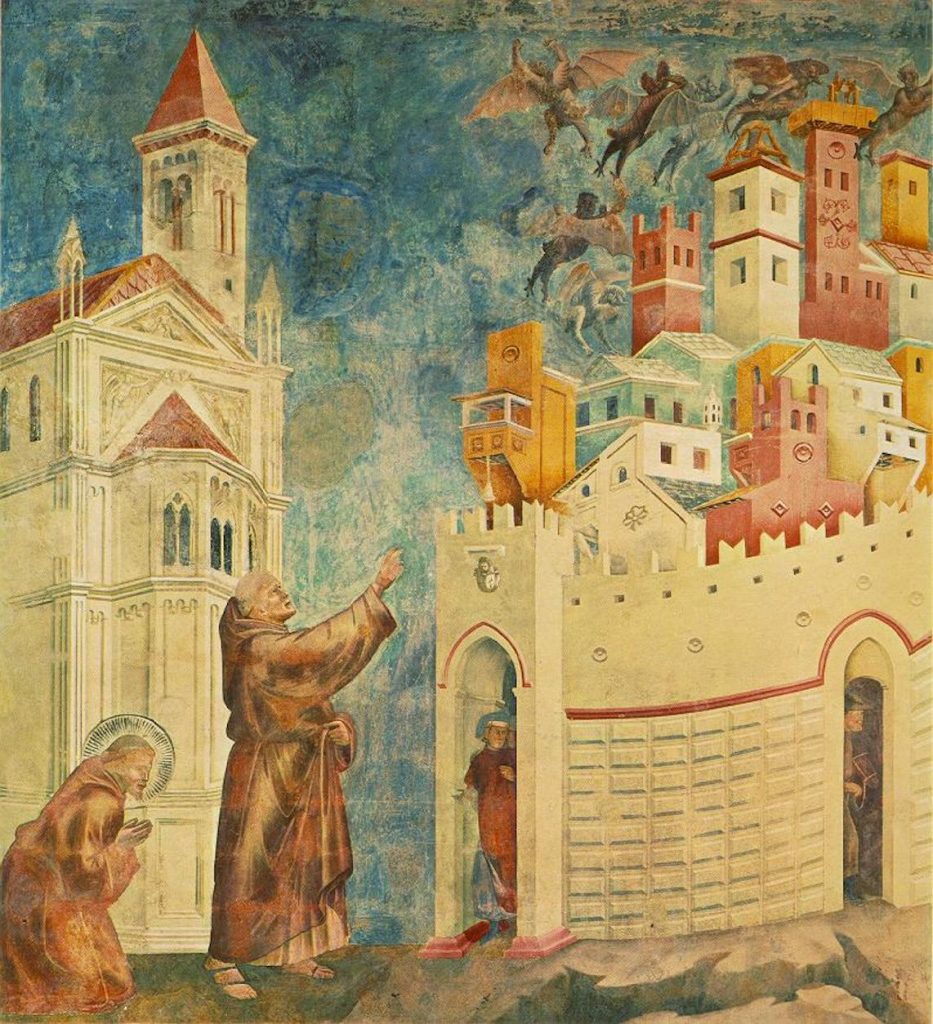
From Giotto, we can see that the Renaissance primarily revived two aspects:
- The revival of humanistic spirit: Painters’ perspectives shifted from gods to humans, marking the beginning of human rights revival.
- The revival of technique: There was a resurgence in the pursuit of painting techniques from the ancient Greek and Roman periods.
Therefore, both in terms of technique and content, Giotto laid the foundation for the subsequent Renaissance.
Speaking of the Renaissance, we cannot avoid mentioning the three artistic geniuses: Leonardo da Vinci (1452-1519), Michelangelo (1475-1564), and Raphael (1483-1520). Da Vinci is most famous for his paintings “The Last Supper” and “Mona Lisa”; Michelangelo’s painting is epitomized by the frescoes of the Sistine Chapel; Raphael’s notable works include “The Sistine Madonna” and “The School of Athens.” In fact, there were many outstanding painters during the Renaissance, but these three are the most familiar to us.
They are called the “Big Three of the High Renaissance” because they attempted to revive and reach the height of classicism in terms of technique. In terms of the expression of content in their paintings, they shifted from the authority of gods to human rights.
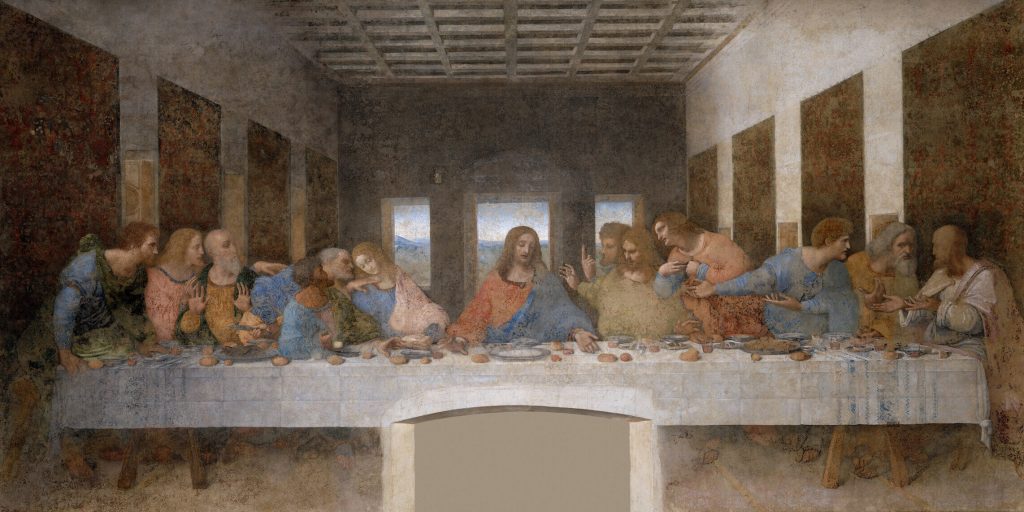
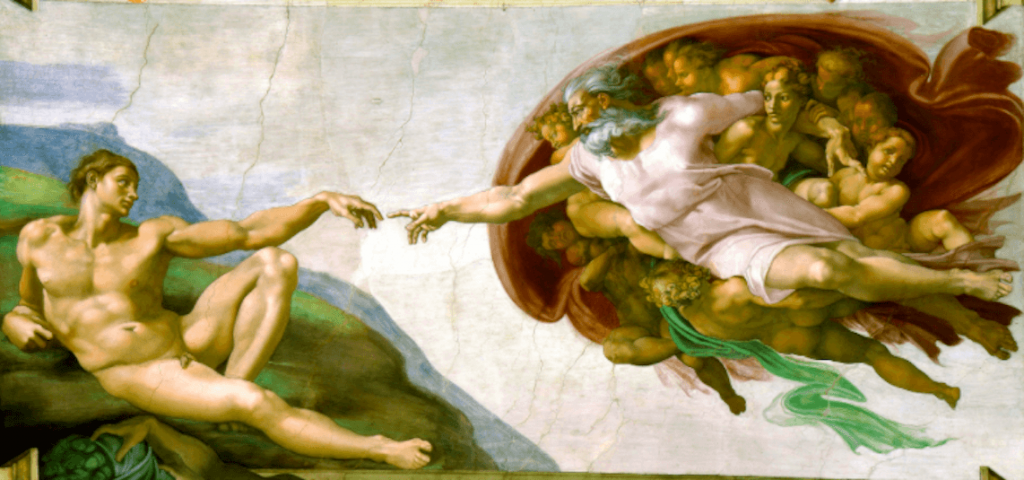
During the Renaissance period, the first emerging artistic style was Baroque.
But what does Baroque mean? In the 18th century, those who looked down upon Baroque art believed it to signify “odd, peculiar, and erroneous.” However, nowadays when we refer to Baroque, we are pointing to a style of art prevalent in 17th-century Europe, which was encouraged by the Roman Catholic Church.
At that time, the Church and the nobility considered the dramatic Baroque style to be an art form capable of captivating people. This style expressed victory, power, and control, visually subjugating courtiers and the Church in other regions.
Representative Baroque painters include Rubens (1577-1640), Velázquez (1599-1660), Bernini (1598-1680), and Caravaggio (1571-1610). In their paintings, the movements and poses of figures were vivid and bold, with bright colors and an emphasis on light and shadow changes, highlighting a stronger humanistic consciousness than even the painters of the early Renaissance.
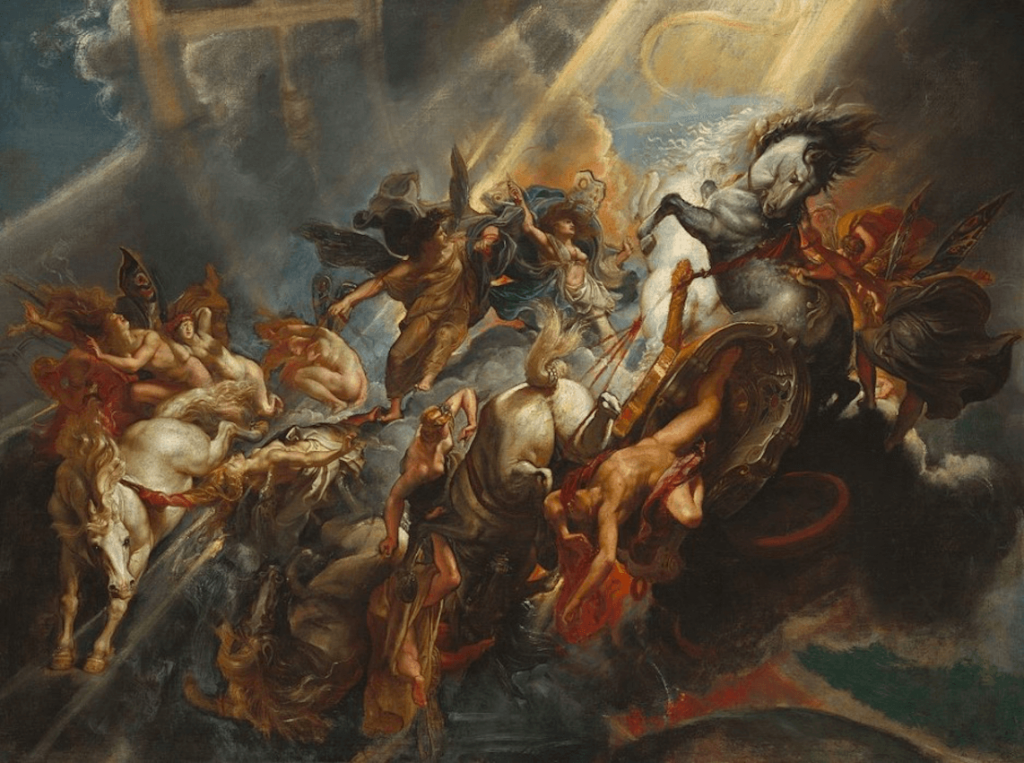
During this period, there was another style called Rococo. Originating in 18th-century France, it initially emerged as a reaction against the elaborate art of the court. However, I believe its complexity surpasses that of any art form of the same period.
Rococo originally referred to interior decorations made of a mix of shells and pebbles. Shells and pebbles? Doesn’t that sound adorable? In reality, in Europe, Rococo-style architecture features patterns dominated by shell-shaped motifs, abstract flame shapes, and asymmetrical lace-like designs, giving it a lively and magical appearance.
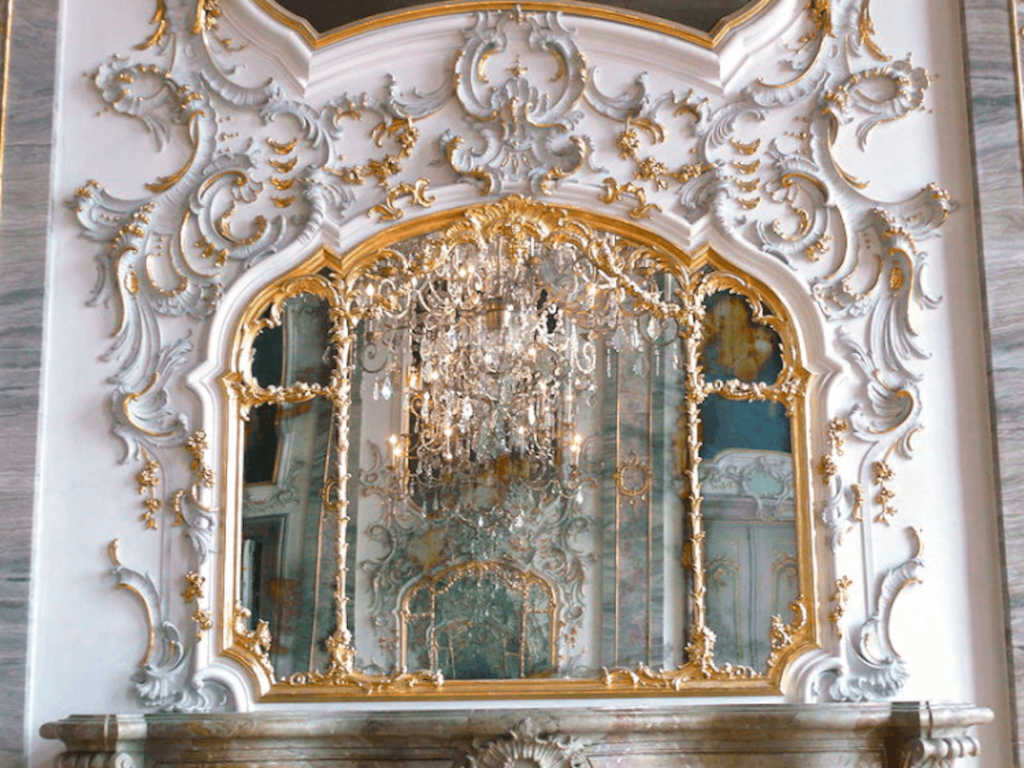
In portrait painting, the subjects are no longer gods, saints, or knights but rather courtiers, nobles, and the like. They no longer depict characters as dignified and holy but rather portray them with a hint of impurity and immorality. Rococo landscape paintings, on the other hand, take on a pastoral style, mostly depicting aristocratic men and women leisurely enjoying themselves amidst mountains and waters.
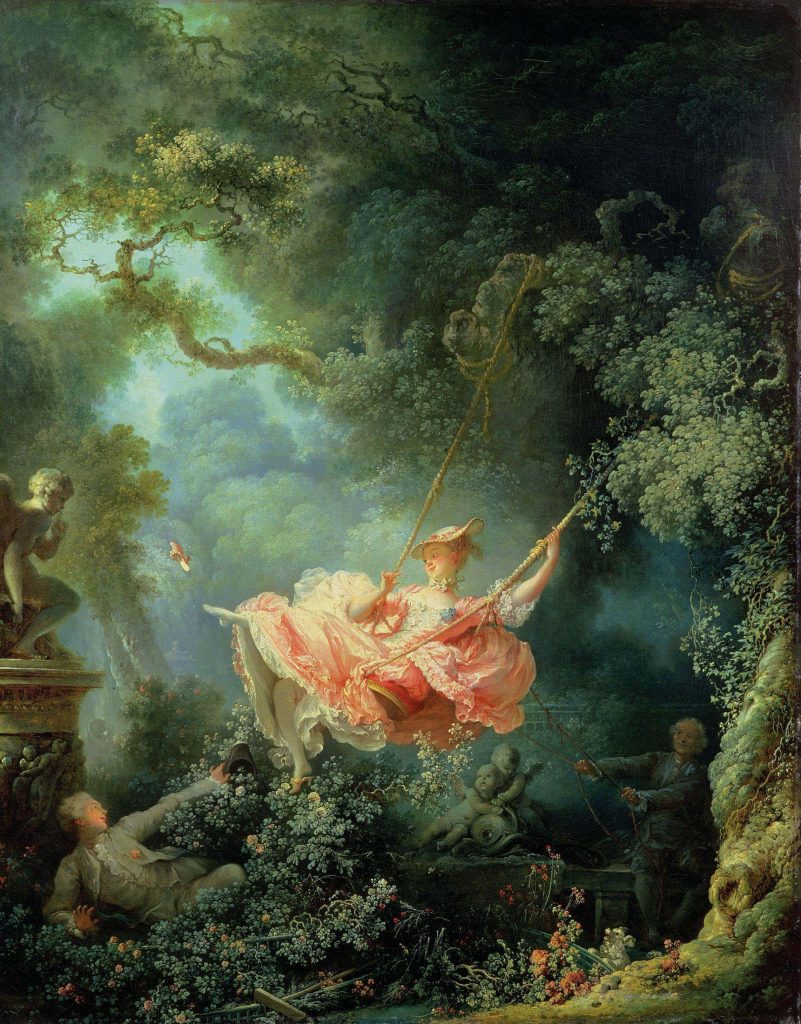
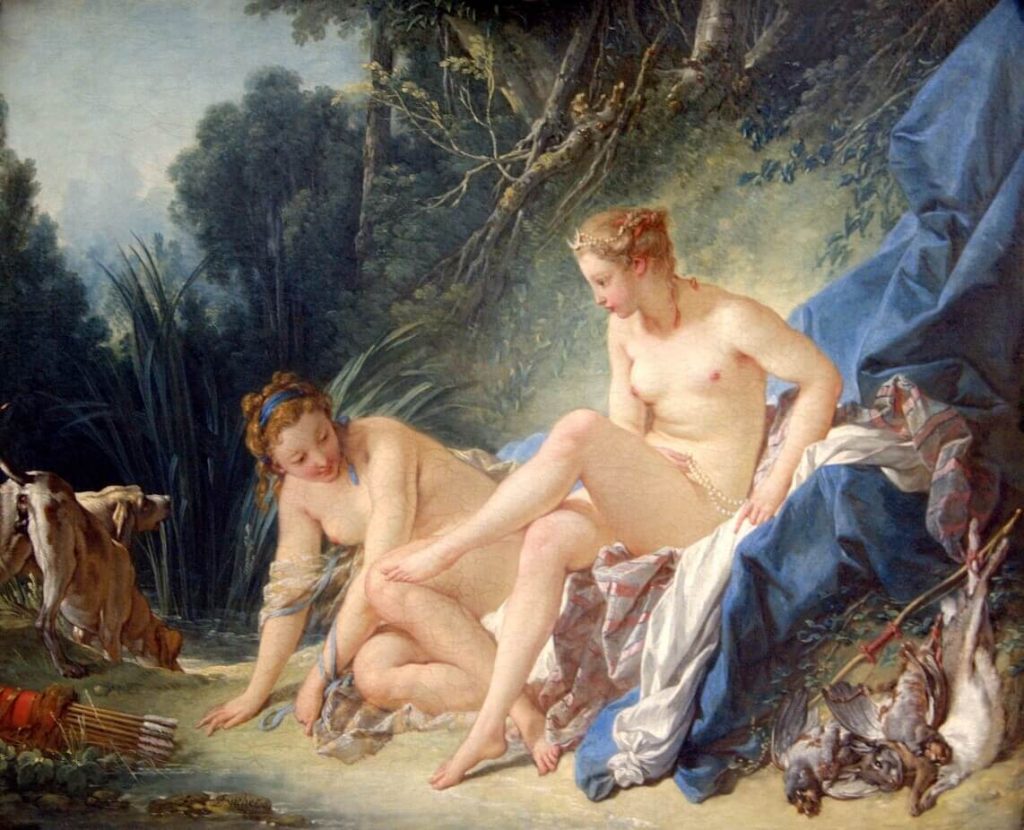
Neoclassicism and Romanticism
However, there is a saying that shallow content is easily replaced. The luxurious style of Rococo was soon replaced by Neoclassicism. At that time, there was a man named Winckelmann (1717-1768), who initiated a movement against the extravagant Rococo style. He advocated for a return to the art of ancient Greece and Rome.
This movement for revival quickly spread, primarily opposing the ornate Rococo and Baroque styles, aiming to restore the artistic styles of ancient Greece and Rome. The artistic style that emerged from this revival movement became known as Neoclassical art, gradually becoming dominant.
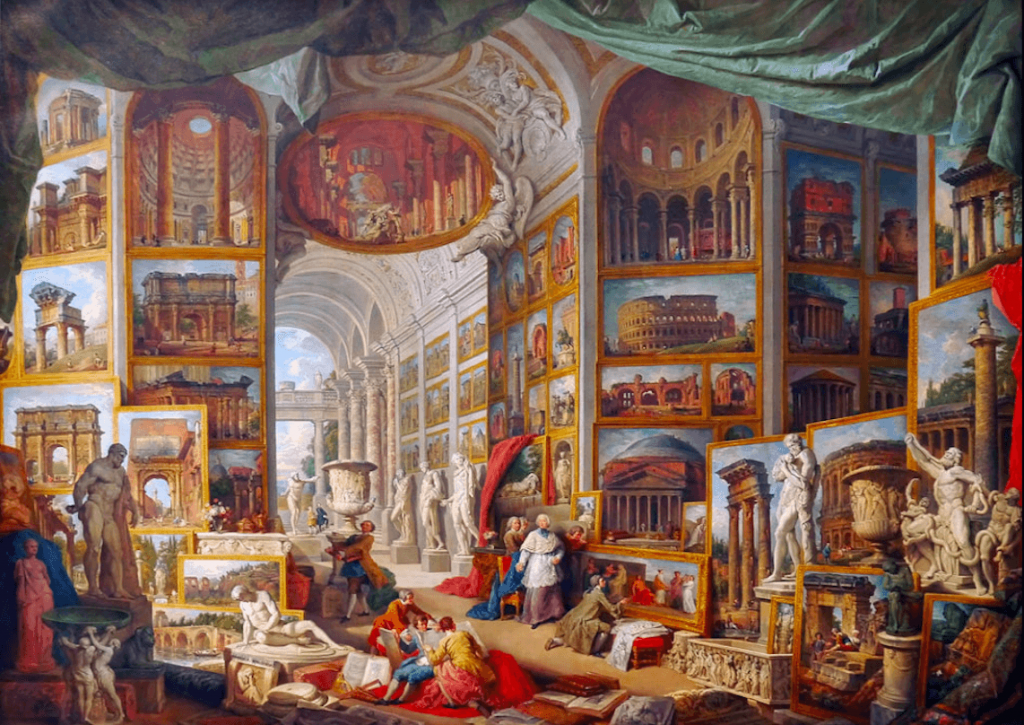
The Neoclassical style features delicate brushwork, smooth transitions, vibrant colors, and meticulous attention to detail, often exuding a sense of dignity and elegance.
However, because Neoclassicism overly emphasizes technical pursuit without reviving the ideals of classicism, compared to works from the classical period, it loses some spirituality.
Later, in the 19th century during the French Revolution, a new style emerged. This style focused on intense emotions such as unrest, fear, and awe, and it is known as Romanticism.
Romanticism differs from our conventional understanding of “romantic.” Its creative focus lies in the pursuit of ideals, a fondness for fantastical artistic imagery, and carries strong subjective and lyrical colors. Representative works include Francisco Goya’s “The Third of May 1808”, J.M.W. Turner’s “The Fighting Temeraire”, and Caspar David Friedrich’s “Wanderer above the Sea of Fog”.
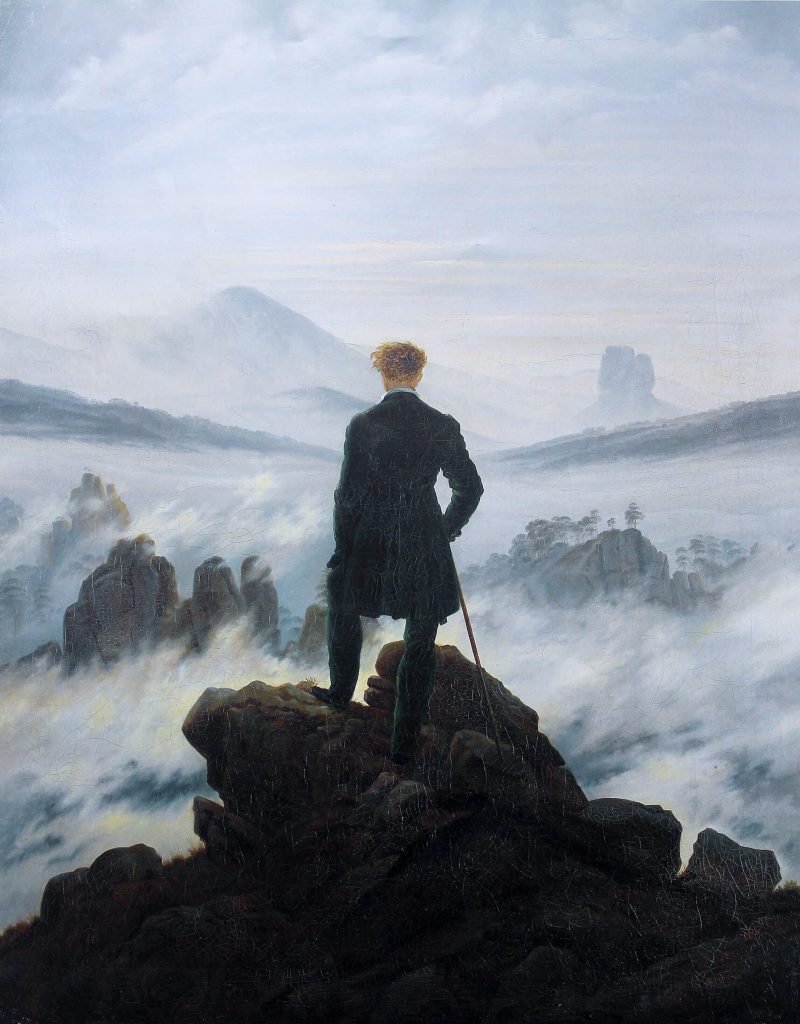
Impressionism and Post-Impressionism
The prevalence of Neoclassicism and Romanticism gradually established France as the artistic center of Europe. During this period, most painters adhered to Neoclassical style as their dominant approach, characterized by solid foundational skills, meticulous composition, and delicate execution. They were referred to as the Academicians.
Every year, the Academicians participated in the official art salon to exhibit their works. However, in 1863, Napoleon III organized a special salon to showcase works rejected by the official salon.
Among them, there was an artist named Édouard Manet (1832-1883) who submitted a painting titled “Déjeuner sur l’herbe” (Luncheon on the Grass), depicting a nude woman with two clothed men. This painting sparked significant controversy and was deemed immoral.
Although it was a small-scale public event, it marked the beginning of the Impressionist era.
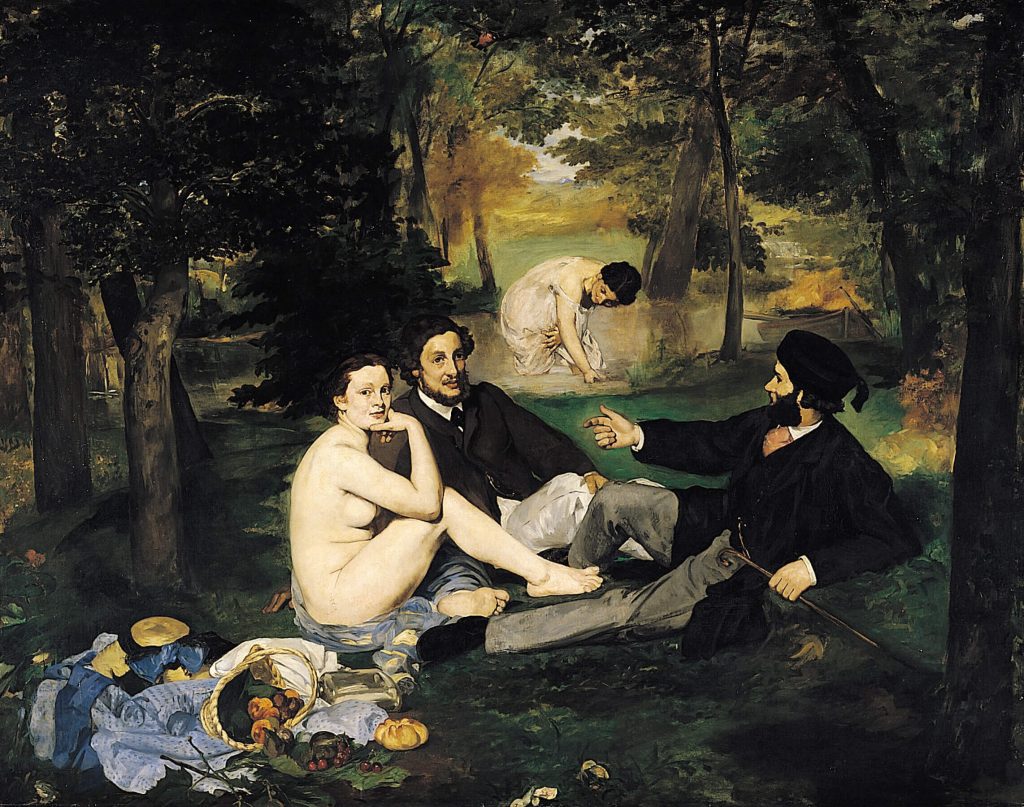
In 1874, a group of young painters held an exhibition in a photographer’s studio, challenging the official salon. The participating artists included well-known figures such as Claude Monet (1840-1926), Edgar Degas (1834-1917), and Pierre-Auguste Renoir (1841-1919). However, this event was quickly mocked by art critics as the “Impressionist” exhibition.
The painters readily embraced this sarcastic label, henceforth referring to themselves as Impressionists, thus marking the birth of Impressionism.
External critics described their paintings as “impressions” mainly because they felt their works were incomplete, appearing as if they were composed of heaps of colors. There was a popular saying at the time: to understand Impressionist paintings, one needed to stand a few meters away to comprehend them.
The reason why people mocked the Impressionists was that they seemed deliberately innovative. However, in reality, they were continuing the tradition of classical art. Despite seemingly deviating from the realism of traditional art, the Impressionists did not abandon realism; they simply focused more on capturing the light and colors of reality.
For instance, whereas red might traditionally symbolize sacrifice, martyrdom, or revolution, and blue might represent purity, in Impressionism, painting a flower red might simply be because the flower is red, and painting the sky blue might be solely because the sky is blue. The Impressionists did not consciously pursue symbolic meanings; instead, they aimed to depict modern color sketches of nature.
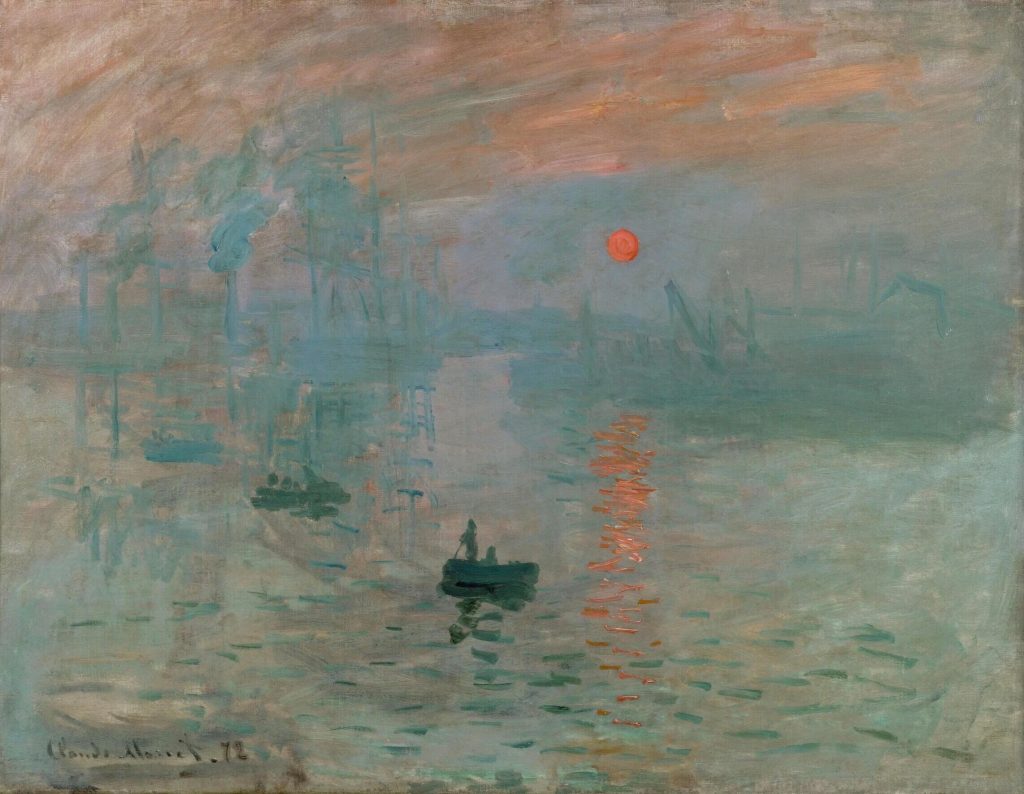
If the Renaissance marked the beginning of modern painting, then Impressionism can be seen as the starting point of contemporary painting. The significant contribution of Impressionism lies in its exploration of the color effects produced by light on objects.
However, by the end of the 19th century, many artists who were once inspired by Impressionism began to oppose it. They felt that the deliberate pursuit of light and color was too one-sided. They believed that color should be consciously used as a means, and that a work of art should express the artist’s own feelings and subjective emotions. As a result, Post-Impressionism emerged. Representative painters include Vincent van Gogh (1853-1890), Paul Cézanne (1839-1906), and Paul Gauguin (1848-1903).
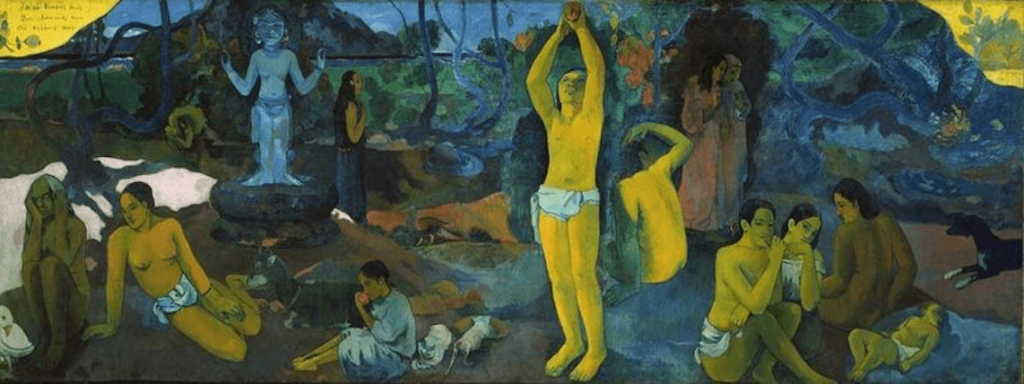
Late 20th Century
Inspired by Post-Impressionism, at the beginning of the 20th century, painters led by Henri Matisse (1869-1954) preferred to express their inner feelings using strong colors and bold lines, rather than adhering to classical methods. However, because their paintings were too exaggerated, they were called the Fauvist movement.
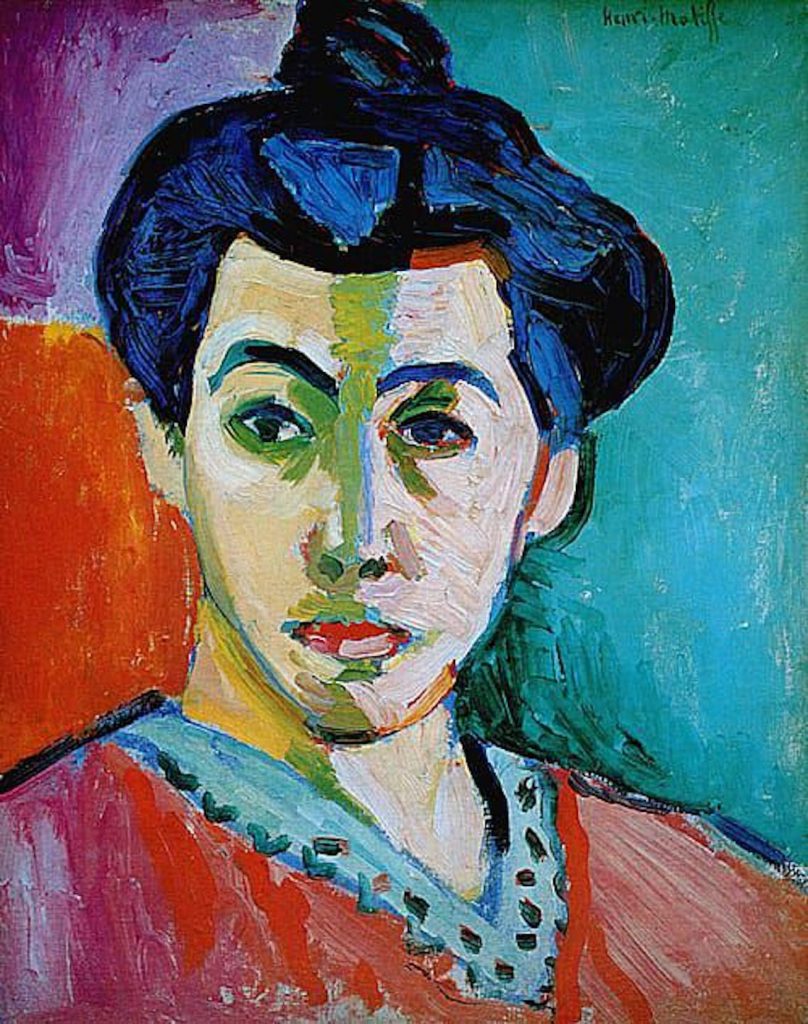
At the same time, another movement emerged, known as Expressionism, which also sought to express the personal feelings of artists, using painting as a means of resisting the world. Subsequently, Pablo Picasso (1881-1973) and Georges Braque (1882-1963) developed Cubism, which began to dismantle all natural forms, incorporating more subjective consciousness into their works.
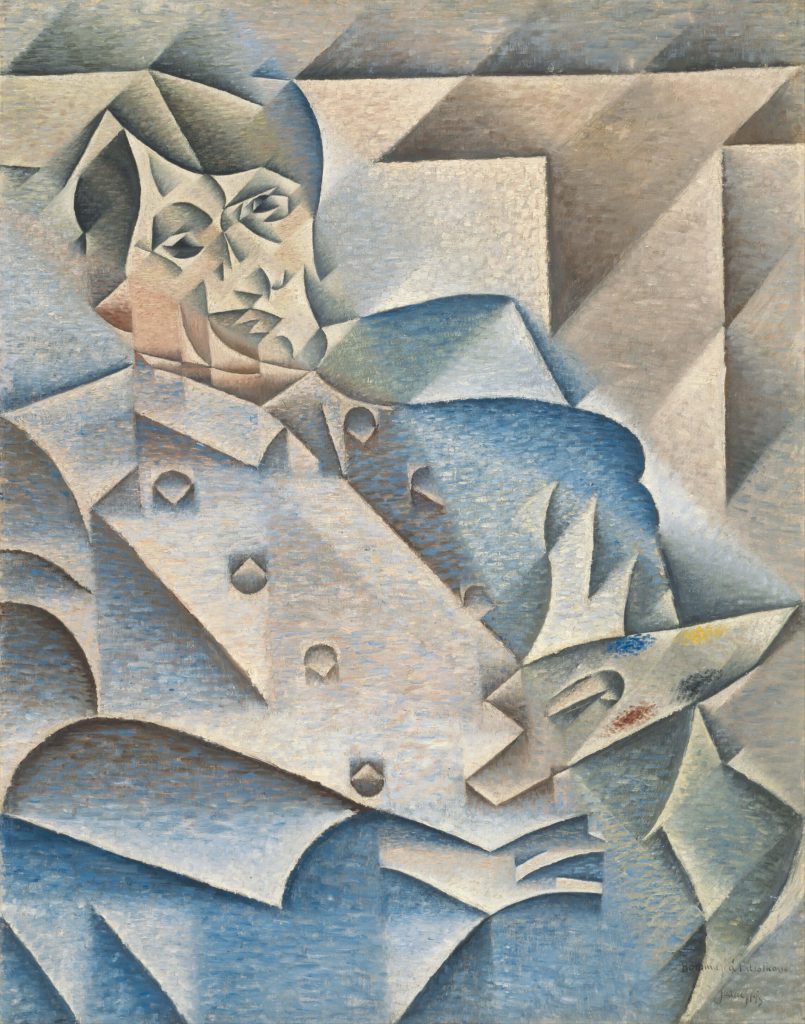
Afterwards, movements such as Futurism, Dadaism, Surrealism, Abstract Expressionism, and others also emerged onto the stage of history, with various art movements springing up like mushrooms after rain. At that time, it seemed like artists had found an outlet, expressing their innermost thoughts and feelings through art. The silent screams, anxieties, fears, and criticisms were all meticulously depicted by artists, displayed in their works for us to see.
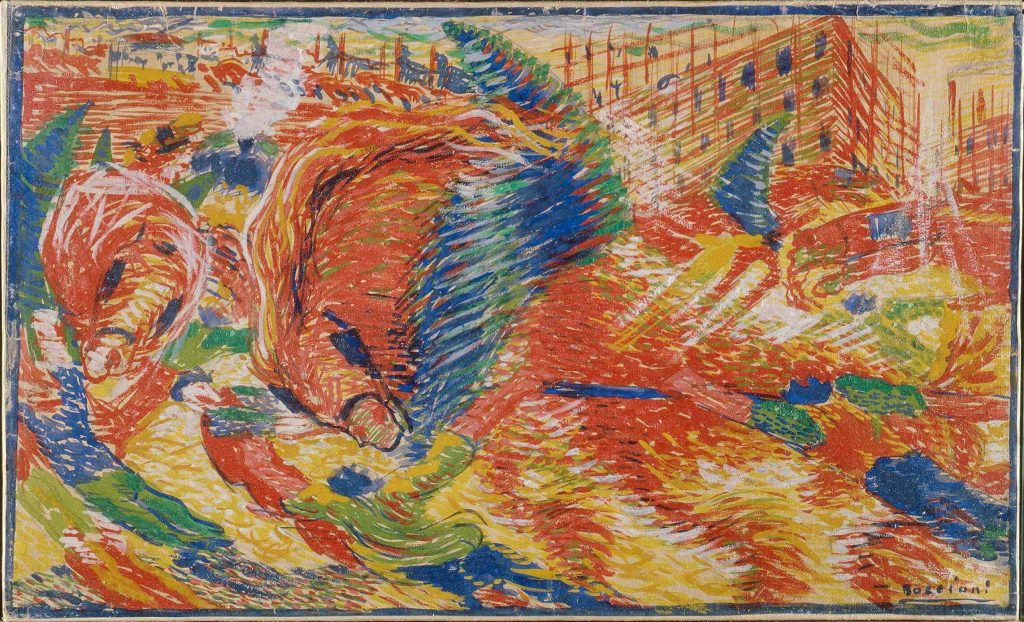
We can observe that contemporary art, compared to the realistic art discussed earlier, tends to be more abstract and expressive. Artists have abandoned realism and tradition, moving from realism to expressionism. The art market has become increasingly free, with artists developing more independent styles and distinctive personal characteristics, leading to a more diverse world.
The history of oil painting continues, and the history of contemporary art is still evolving, so I won’t make too many judgments here.
So far, we have covered the history of oil painting and its common genres. In reality, there are many more genres of oil painting, but these genres have played significant roles in history and are well-known to us.
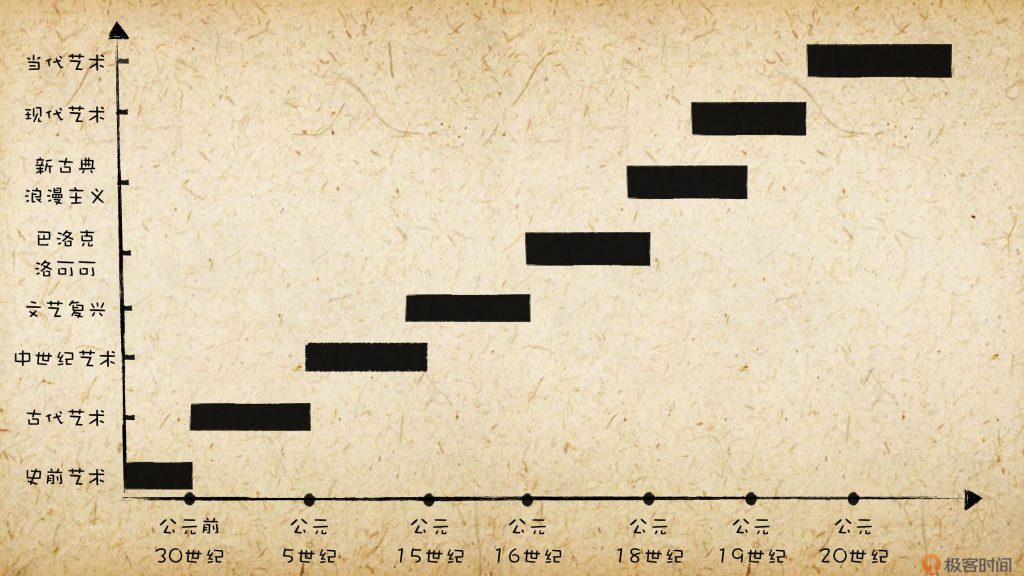
We can see that throughout the history of oil painting, there is a core theme: the development of artists’ self-awareness.
In ancient times, we revered nature and the divine, and the consciousness at that time was transcendent; during the Greek and Roman periods, there was a return to collective consciousness that pursued realistic expressions of reality; after experiencing the era of religious influence during the Middle Ages, we arrived at the liberation of self-awareness during the Renaissance, followed by the self-awareness exploration of Impressionism, leading to the pure expression of self-awareness today.
Understanding this historical theme will help us to more intuitively grasp the artist’s standpoint and the content they intend to express in their works, making it much easier to understand artworks in the future.
To Sum up
Today, in this lecture, we have discussed the history and genres of oil painting.
From the pursuit of the golden ratio and perfection in ancient Greece to the realism of ancient Rome, Western art has developed step by step. During the Middle Ages, painting began to serve religious rule, bringing about a century of war and struggle. Fortunately, humanistic consciousness gradually awakened, and the curtain of the Renaissance was gradually lifted. Painters began to wield humanistic spirit as their weapon, rediscovering the shadow of classicism.
Baroque and Rococo are two distinctive styles in this process. They pursue grandeur, worship humanity, and allow the thoughts of painters to flow freely. The smoke of revolution rose, followed by Neoclassicism and Romanticism, and art stood at a crossroads, back and forth.
Why should paintings look realistic? Impressionism was born amid people’s ridicule but became a groundbreaking art movement in the Western world. Afterwards, various “eccentric” movements emerged one after another, leaving vivid strokes in art history.
So you see, as long as human civilization exists, art will never disappear. The forms and styles of art may vary, but the human pursuit of art has never ceased, starting from the day we clumsily painted the first picture in a cave.
Love reading your blogs